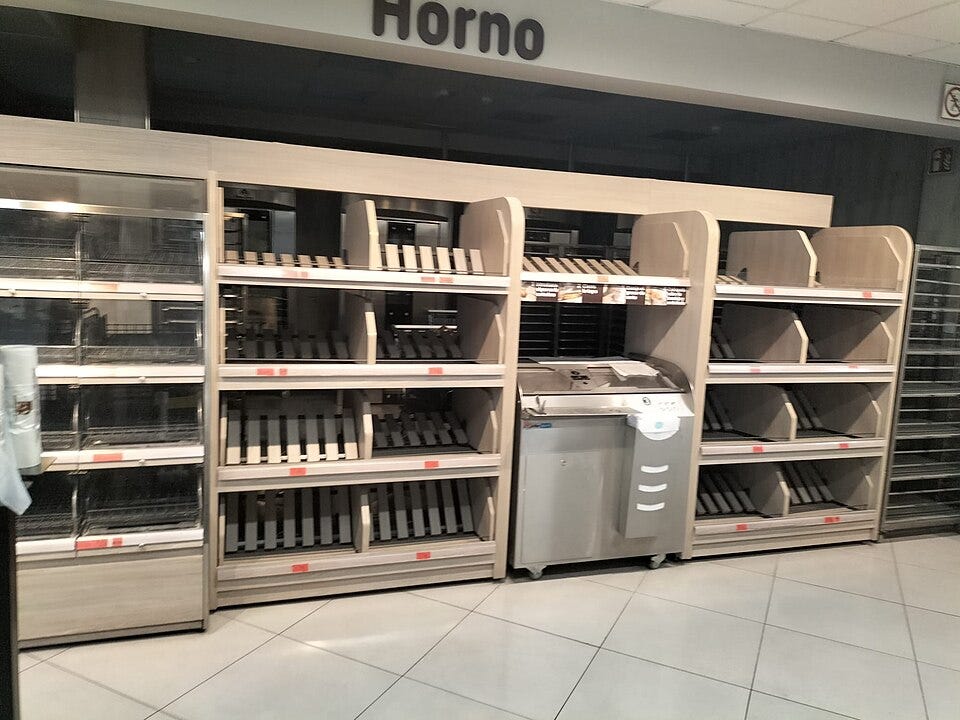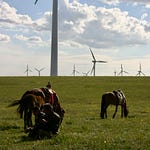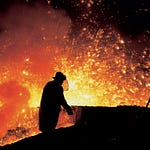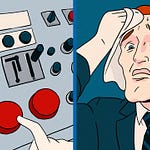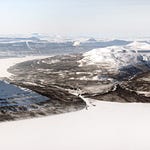Welcome back to Decouple, a weekly podcast about energy, technology, and the planet, with interviews by Chris Keefer. Watch on YouTube, Spotify, or Apple.
In the wake of Europe's largest blackout in decades, commodities investor
helps us to understand the physics of power grids, and how Spain's celebrated renewable transition became its Achilles' heel. He introduces the “hellbrise” phenomenon—excessive, rather than too little, renewable generation—as he considers the role of grid inertia in preventing minor disruptions from cascading into failures in mere seconds. Spanish energy policy isn’t the first time that green idealism has brushed over the fundamental requirements of reliable electricity, and it is unlikely to be the last. But it has certainly provided a stark example of the dangers that await such an oversight.Watch now on YouTube.
We talk about
The Iberian blackout
Why grid operators had only 1.5 seconds to respond
Grid frequency and inertia
The concept of “hellbrise” (bright and windy conditions) as the opposite of “dunkelflaute”
How nuclear power in France acted as a buffer, preventing the blackout from spreading across Europe
The growing number of grid “incidents” across Europe as renewable penetration increases
The economic costs of renewable-focused systems and how politicians hide these through subsidies
The investment case for renewables weakening despite continuing political support
Read Stahel’s Substack post that inspired this interview:
Deeper Dive
The power grid is like the circulatory system of modern society, taken for granted until it fails. On April 28th, 2025, this lesson became unavoidable when Spain and Portugal felt the pulse of their grid stutter and stop. Far from a random event, the blackout revealed the disconnect between our green energy ambitions and the physics that has kept the lights on for a century.
To Stahel, this blackout was a warning shot. “The hellbrise made it all possible,” he explains, coining a term that may soon enter our energy lexicon alongside its counterpart “dunkelflaute.” Dunkelflaute is German for “dark doldrums,” when neither wind nor sun are around to generate power. Hellbrise, in contrast, means “bright breeze.” It sounds cheerful enough but is proving even more problematic for grid operators. It creates not too little but too much power. It can't be easily controlled, argues Stahel, especially when it comes from thousands of distributed solar panels beyond direct operator control.

The modern grid walks a knife’s edge. Every second, supply must perfectly match demand to maintain a steady frequency. This electrical heartbeat must stay near 50 Hz in Europe. When that frequency strays too far in either direction, equipment overheats, protection systems trigger, and cascading failures can arrive in seconds. What made the Spanish blackout remarkable wasn't the initial problem, but how quickly it spread: 15 gigawatts of solar generation collapsed in just 1.5 seconds—roughly the time since you read “1.5 seconds.” Too fast for a human to do much of anything.
The missing element was inertia, a physical property provided by the massive spinning turbines in conventional power plants. These rotating masses act as shock absorbers, giving operators precious time to respond when something goes wrong. But on April 28th, Spain was running primarily on solar and wind, which connect to the grid through electronics that provide no natural inertia. The system embrittled, it had no buffer between minor disturbance and total collapse.

“We were using nothing but solar and wind. So we had a lack of inertia in the grid to start with in Spain,” Stahel notes. “The lack of conventional sources made it so vulnerable and caused this cascade to happen in lightning speed.” It was only a week prior that the Spanish grid operator proclaimed its triumph of running almost entirely on renewables for a short time, a goal other European nations are racing toward.

To Stahel, what saved Europe from a continent-wide blackout was France's nuclear fleet. While Spain's featherweight grid collapsed, the same disturbance hit France but was absorbed by the inertia of heavy, spinning nuclear turbines. France stood like a guardian between Spain’s electric grid and that of broader Europe’s. “Without the French, the whole blackout would have gone into France and into Germany and into all other countries,” Stahel explains. This stands in stark contrast to the Spanish prime minister's quick claim that “nuclear would not have helped us here.”
In a moment of post-blackout clarity, Spanish grid operators immediately reduced solar's share from 55% to 31% of generation, bringing conventional resources back online.
Beyond the technical failures lies a market failure. Current electricity markets reward the cheapest generators first, pushing nuclear plants into unprofitable territory when renewables flood the grid with zero marginal cost power. The inertia and stability services that nuclear and other conventional plants provide go unvalued.
The path forward requires honesty about tradeoffs. Stahel suggests we've forgotten the critical nature of electricity: “If electricity breaks down… after three days we become zombies. We literally kill each other for food or for life support.” This is hardly hyperbole—in Spain, supermarket fights broke out less than two hours after the blackout began.
The Spanish blackout reveals that our grid should be treated with the same caution as aviation, where failure is not an option. “When Airbus does a new airplane, the failure rate has to be basically nothing,” Stahel points out. And yet, with renewables, we court energy sources vulnerable to common mode failure in dark doldrums and bright breezes alike.
As Europe faces new security challenges and industrial competition from regions with cheaper energy, the financial strain of maintaining this renewable-heavy system will grow. The economic toll is already visible as energy-intensive industries quietly relocate to regions with more stable, affordable power. This silent deindustrialization may ultimately force a reckoning with the true costs of reliable electricity.
Support Decouple
Keep the lights on and ideas flowing at Decouple Media—consider making a pledge on Substack or a tax-deductible donation via our fiscal sponsor.
Timestamps
00:00 Introduction
05:17 What is Hellbrise?
14:53 Troubles with distributed generation
18:42 Grid 101
22:11 The Grid as civilizational life support
27:10 Grid inertia
31:24 The Iberian blackout
40:30 Blackout responses and paths forward
49:36 Electricity and idealism
1:02:08 How fixable is the grid?
1:05:00 Support Decouple
Keywords
Grid inertia, European blackout, Hellbrise, renewable energy vulnerabilities, frequency stability, Spanish power outage, grid physics, synchronous generation, energy transition risks, grid reliability






